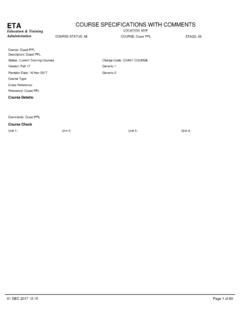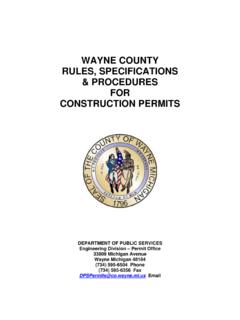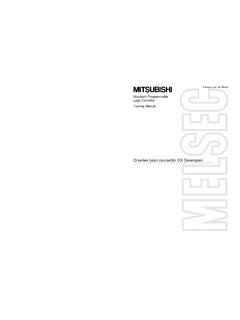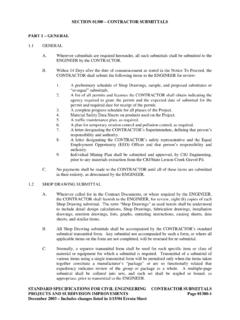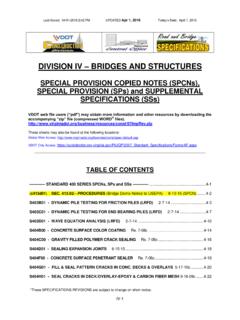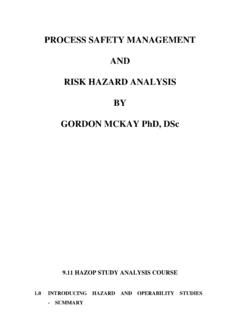Transcription of MULTISOURCE (GENERIC) PHARMACEUTICAL PRODUCTS: …
1 Working document RESTRICTED WORLD HEALTH ORGANIZATION ORGANISATION MONDIALE DE LA SANTE MULTISOURCE (GENERIC) PHARMACEUTICAL PRODUCTS: GUIDELINES ON REGISTRATION REQUIREMENTS TO ESTABLISH INTERCHANGEABILITY DRAFT REVISION The World Health Organization acknowledges with the thanks the input of the following FIP/WHO BCS Task Force members: Kamal K. Midha, Vinod P. Shah, Gordon Amidon, Dirk Barends, Jennifer Dressman, John Hubbard, Hans Junginger, Rabi Patnaik, James Polli, Salomon Stavchansky. _____ World Health Organization 2005 All rights reserved. This draft is intended for a restricted audience only, the individuals and organizations having received this draft. The draft may not be reviewed, abstracted, quoted, reproduced, transmitted, distributed, translated or adapted, in part or in whole, in any form or by any means outside these individuals and organizations (including the organizations concerned staff and member organizations) without the permission of WHO.
2 The draft should not be displayed on any website. Please send any request for permission to: Dr Sabine Kopp, Quality Assurance & Safety: Medicines (QSM), Department of Medicines Policy and Standards (PSM), World Health Organization, CH-1211 Geneva 27, Switzerland. Fax: (41-22) 791 4730; e-mails: The designations employed and the presentation of the material in this draft do not imply the expression of any opinion whatsoever on the part of the World Health Organization concerning the legal status of any country, territory, city or area or of its authorities, or concerning the delimitation of its frontiers or boundaries. Dotted lines on maps represent approximate border lines for which there may not yet be full agreement. The mention of specific companies or of certain manufacturers products does not imply that they are endorsed or recommended by the World Health Organization in preference to others of a similar nature that are not mentioned. Errors and omissions excepted, the names of proprietary products are distinguished by initial capital letters.
3 The World Health Organization does not warrant that the information contained in this draft is complete and correct and shall not be liable for any damages incurred as a result of its use. This document is a revision of a text drafted by Dr Rein P hkla, Estonia. The first draft was extensively discussed among the members of the FIP/WHO BCS Task Force by mail, as well as during an informal meeting held in Geneva on 16-18 August 2004. Thereafter further modifications were discussed in a second informal consultation held in New Orleans. Dr Vinod Shah and Dr K. Midha served as rapporteurs of these meetings. The draft was then presented to the 39th WHO Expert Committee on Specifications for PHARMACEUTICAL Preparations. All comments received were collated and categorized by Professor Dressman, Germany, and subsequently discussed during a consultation held on 18-22 July 2005 in Geneva. Please send any comments on this revised text to Dr S. Kopp, Quality Assurance and Safety: Medicines, Medicines Policy and Standards, World Health Organization, 1211 Geneva 27, Switzerland, fax: (+41 22) 791 4730 or e-mail: (with a copy to by 30 November 2005.)
4 Working document page 2 TIMETABLE FOR MULTISOURCE (GENERIC) PHARMACEUTICAL PRODUCTS: GUIDELINES ON REGISTRATION REQUIREMENTS TO ESTABLISH INTERCHANGEABILITY. DRAFT FOR REVISION Date First draft document ( ) prepared by Dr Rein P hkla, Estonia and mailed for comments June 2004 Collation of comments and revision 1 drafted by Dr Midha and Dr Shah and other FIP/WHO BCS Task Force members for discussion during consultation at WHO headquarters, Geneva 16-18 August 2004 Revision 2 drafted during consultation in New Orleans, USA 4-6 September 2004 Revision 3 drafted and mailed for comments 27 September 2004 Presentation to Thirty-ninth WHO Expert Committeeon Specifications for PHARMACEUTICAL Preparations 25-29 October 2004 Collation of comments received December 2004 Classification of comments by Professor Dressman March-April 2005 Review of all comments received and revision of text 18-22 July 2005 Mailing to participants of the consultation for comment August 2005 Collation of comments September 2005 Mailing for comments September 2005 Presentation to the Fortieth WHO Expert Committee on Specifications for PHARMACEUTICAL Preparations 24-28 October 2005 Working document page 3
5 CONTENTS page 1. Introduction 4 2. Definitions 5 3. Documentation of equivalence for marketing authorization 8 4. When equivalence studies are not necessary 8 5. When in vivo equivalence studies are necessary and types of studies required 10 In vivo studies 10 In vitro studies 11 6. Bioequivalence studies in humans 11 General considerations 11 Provisions for studies in humans 11 Justification of human bioequivalence studies 11 Selection of investigators 11 Study protocol 12 Study design 12 Alternative study design in patients 13 Considerations for drugs with long elimination half-lives 13 Considerations for multiple dose studies 13 Considerations for modified release products 14 Subjects 14 Number of subjects 14 Drop-outs and withdrawals 15 Selection of subjects 15 Monitoring the health of subjects during the study 16 Considerations for genetic phenotyping 16 Study standardization 16 Investigational product 17 MULTISOURCE PHARMACEUTICAL product 17 Choice of comparator product 17 Study
6 Conduct 18 Selection of dose 18 Sampling times 19 Sample collection 19 Parameters to be assessed 19 Studies of metabolites 20 Measurement of individual enantiomers 21 Use of fed state studies in bioequivalence determination 21 Immediate release formulations 21 Modified release formulations 21 Active PHARMACEUTICAL ingredients quantification 21 Statistical analysis 23 Acceptance ranges 24 Reporting of results 24 Special considerations 25 Fixed combination products 25 Clinically important variations in bioavailability 25 Highly variable drugs 25 Working document page 4 Application of truncated AUC in bioequivalence determination 26 7. Pharmacodynamic studies 27 8. Clinical trials 28 9. In vitro testing 29 In vitro testing and the Biopharmaceutics Classification System (BCS) 29 Biopharmaceutics Classification System (BCS) 29 High solubility 30 High permeability 30 Determination of dissolution characteristics of MULTISOURCE products in consideration of a biowaiver based on the BCS 31 Very rapidly dissolving 31 Rapidly dissolving 31 9.
7 2 Qualification for a biowaiver based on the BCS 31 Dissolution criteria for biowaivers based on the BCS according to API properties 33 Biowaivers based on dose-proportionality of formulations 35 Proportionally similar formulations 35 Qualification for biowaiver based on dose-proportionality of formulations 35 Dissolution profile comparison for biowaivers based on dose-proportionality of formulations 36 Immediate release tablets 36 Extended release beaded capsules 36 Extended release tablets 37 Biowaivers for scale-up and post-approval changes 37 10. References 37 1. INTRODUCTION This general guidance is intended to provide recommendations to sponsors for the requirements of a MULTISOURCE (generic) PHARMACEUTICAL product approval in their respective countries. The guidance is prepared to provide appropriate in vivo and in vitro requirements to assure interchangeability of the MULTISOURCE product without compromising safety, efficacy and PHARMACEUTICAL product quality.
8 The national health and drug regulatory authorities should ensure that all PHARMACEUTICAL products subject to their control are in conformity with acceptable standards of safety, efficacy and quality, and that all premises and practices employed in the manufacture, storage and distribution of these products comply with Good Manufacturing Practice (GMP) standards so as to ensure the continued conformity of the products with these requirements until such time as they are delivered to the end user. All PHARMACEUTICAL products, including MULTISOURCE products, should be used in a country only after approval by the local authority. Regulatory authorities should require the documentation of a MULTISOURCE PHARMACEUTICAL product to meet (i) GMP, (ii) quality control specifications, and (iii) PHARMACEUTICAL product interchangeability. MULTISOURCE PHARMACEUTICAL products need to conform to the same appropriate standards of quality, efficacy and safety required of the originator's (comparator) product.
9 In addition, reasonable assurance must be provided that the MULTISOURCE product is therapeutically equivalent and interchangeable with the comparator product. With some Working document page 5 classes of product, including - most evidently - parenteral formulations of highly water soluble compounds, interchangeability is adequately assured by implementation of GMP and evidence of conformity with relevant pharmacopoeial specifications. For other classes of product, including many biologicals such as vaccines, animal sera, products derived from human blood and plasma, and products manufactured by biotechnology, the concept of interchangeability raises complex considerations that are not addressed in this document, and these products are consequently excluded from consideration.
10 In order to ensure interchangeability, the MULTISOURCE product must be therapeutically equivalent to the comparator product. Direct practical demonstration of therapeutic equivalence in a clinical study usually requires large numbers of patients. Such studies in humans can be financially daunting, are many times unnecessary and in certain cases may be unethical. For these reasons the science of bioequivalence testing has been developed over the last forty years. According to the tenets of this science, therapeutic equivalence can be assured when the MULTISOURCE product is both pharmaceutically equivalent /alternative and bioequivalent. Types of in vivo bioequivalence studies include pharmacokinetic studies, pharmacodynamic studies and comparative clinical trials. To exert an optimal therapeutic action, an active PHARMACEUTICAL ingredient should be delivered to its site(s) of action in an effective concentration for the desired period. To allow reliable prediction of the therapeutic effect, the performance of the PHARMACEUTICAL preparation should be well characterized by in vivo and/or in vitro studies.










